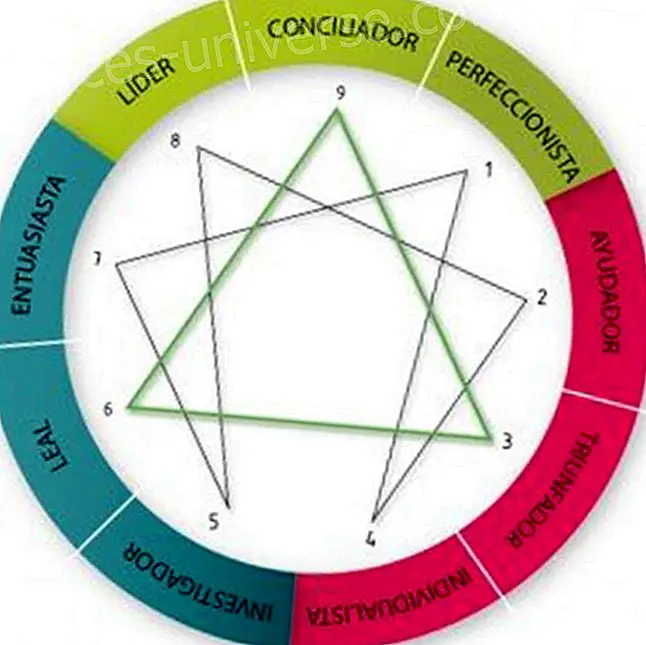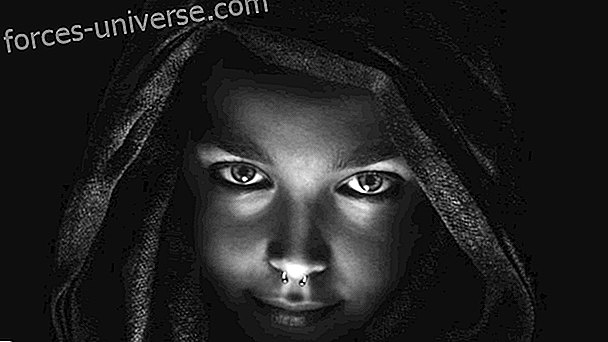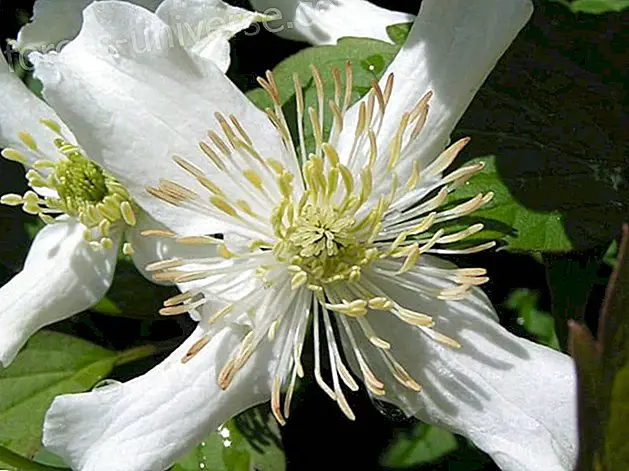
In Plato's Dialogues there are approximately sixteen myths . Each of them expresses one aspect: psychological, cosmological, political, anthropological . In the case of the Myth of the Cave, despite being expressly educational, it can be read in a psychological, political-social, epistemic key, since it reflects Plato's philosophical system, that is, he narrates the Theory of Ideas with images .
This time there will be a tour of the symbolic language that involves the Myth of the Cave giving light on what it means.
The Myth of the Cavern
The Myth of the Cave is the best known myth in Plato's philosophy. Anyone can read the myth and interpret it from different keys, but what does not change is that it always finds a wisdom, a comfort for the soul lover of wisdom. This myth is narrated in Republic VII . It is an allegory that aims to illustrate at first the education and differentiate it from the lack of education. It is perhaps the most sublime moment of the Dialogue The Republic, because the myth is introduced just when another allegory ends, that of the line. The Allegory of the Line, in short words, indicates that reality is divided into four sessions: conjecture, belief, discursive reasoning and intelligence . This allegory is not properly a myth, but an imaginative exercise to explain the reality of man's knowledge and then serve as support to understand the ontological and epistemological keys within the Myth of the Cave.
On another occasion it has been said that myth is a vehicle with great truths, it is a symbolic language guardian of truth, it mediates between Kama Manas and Intuition, as we will explain later. This symbolic and esoteric language is presented in the Myth of the Cave . As far as possible we will be showing the seven symbols found in this myth and its ontological and epistemological keys.
Broadly speaking, the Myth of the Cave narrates the process of releasing a chain that lies within a cave. Platà n tells us that at the bottom of a cave there are men chained by the hands and feet from their childhood facing the wall. A few meters away from these chained men there is a wall that separates them from a passage through which other men pass, the cavern masters, with spears at whose ends various objects of nature appear . And further back is a Fire that projects these figurines towards the wall producing shadows that the prisoners take as real.
After this description of the interior of the cave and the condition in which the chained ones find themselves, Plato goes on to relate the process of liberation of one of these souls . He tells us that from one moment to the next one of the chained ones realizes his condition and turns his whole soul backwards, managing to free himself from the chains and climb towards the surface. Climb with difficulty along the path that leads to the exit. He sees some rays of something luminous entering the cave and is guided by these.
Once outside the cave although you want to see nature and the Sun can not observe directly, but through the water and at night . At night he looks at the sky and sees the stars, the moon, the stars and the planets that can become visible. Until your eyes adapt to such immense glare and finally see the sun directly only comes out at night. One day he manages to open the eye of the soul and see a circumference of true fire and of greater intensity than the fire of the cave . That day contemplates the cause of everything that exists.
Then there is a dilemma for the newly released: return to the cave to free their companions or not. Many would choose to stay outside the Cavern and live a serene life and contemplate the real, few would go down again to the dark cavern and reveal the truth to their previous prison partners. To these last ones, says Plain, it would happen to him an unfortunate phenomenon, because when he goes down, see his companions and tell him the situation in which they find themselves, it will cause They would not be believed by the chained ones, they would even kill him so that the liberated person would not continue saying lies . Thus, says Plain, many Masters have come down to free these chains by delivering wisdom and a spiritual way of life. The Masters who have ascended for their love of neighbor come down so that with their word they remind humanity of the existence of the Sun. They are beings of light.
The seven symbols of the Cave Myth

The Myth of the Cave is a highly esoteric story; narrates two worlds, one inside the cave or sensitive (material) and another outside the cave or intelligible (spiritual) through which any soul that wishes to free itself and see the Sun must travel. In the Myth it was possible to appreciate that there is a series of images that represents the path towards the knowledge of Ideas, that is, towards that eternal, permanent, imperishable, immortal reality, the cause of all things. Let's see how the seven symbols of the Cave Myth are expressed and what meaning is given:
The prisoners
The first symbol of the Cave Myth is men chained by hands and feet. These prisoners have spent their entire lives in that condition. It represents humanity that does not seek its spiritual being . He is in the eternal wheel of Karma, without knowing that turning his soul, as the planks of the Greek theaters turn, there is a beautiful path of light and hope. The chained ones must realize that they are free souls and in them there is a ghost of that light of the luminous Sun.
The chains
The second symbol of the myth is the chains that tie men into the cave. The chains represent fears, hatred, attachment, limitations, lies, all the vices and defects of the Personality that unbalances the soul . This quaternary soul is ephemeral and mutable. It is for this reason that the soul must move those chains, perceive that it possesses them so that it can convert its soul towards the path of Dharma.
Shades
The third symbol of the Myth is the shadows cast on the wall. It is said in the Myth that at the tips of the spears of the cavern masters there are figures of Nature that are projected on the wall product of the firelight. These shadows represent the appearance of things, the illusion is lived within the cave. Everything the chains see is a simulated reality. The true reality lies outside the cave. The truth is found in the spiritual world, in which the idea of Good is the real, eternal, imperishable.
The Masters of the Cavern
The fourth symbol of the Myth is the masters of the cave. These are the ones that carry the figurines at the tip of their spears causing the shadows in the cavern. These represent the false politicians and all those men of power who only want slavery of the soul . Although the cave's masters are not chained they are inside the cave without being able to see the Sun. They are blind to the soul and tied to their passions. They can also free themselves, but they must release their spears, that is, solar craving for power and turn their whole soul towards the beautiful path of right action to contemplate the true light, that which is not found in the small flames of fire, but in the vastness of the sun.
The fire
The fifth symbol of the myth is fire. It is located between the masters of the cave and the road to the exit of the cave. The fire element is highly symbolic, numerous mythology is present as an element of creation or destruction, for example, the fire that steals Prometheus to Zeus to deliver to the unprotected human. The fire in the Myth represents the cause of illusory and unreal images produced by the mind or Kama Manas . Kama Manas only produces beliefs of how things are. It is that selfish mind that divides reality and confuses the soul. Although fire is the brother of the Sun, only a minor light emanates. Likewise it is the Kama Manas with respect to the Atma. The Kama Manas does not serve to see the Ideas, but it throws gossip of light to awaken love for the light of the great Sun.
The night
The sixth symbol of the Myth is night. When the liberated person climbs the path outside the cave, he cannot see the Sun at first, so he waits for the night to go out and observe Nature. In the night you can see the stars, the stars, the planets and the beautiful moon, whose light comes from the Sun. This liberated soul contemplates the sacred geometry that exists in those stars. It is close to knowing the cause of all things. The night represents the contemplation of mathematical objects through discursive thinking, as Plato says, or the Manas one step away from being Budhi . In the night the soul moves faster before being enlightened.
Sun
The seventh symbol is the Sun. It is a star used by many cultures to represent the supreme divinity. The Sun in Myth is the supreme Good, cause of all things, it is what gives Life to everything that exists. The Beautiful, the Truth and Justice are archetypes to approach the IDEA OF GOOD . Only he who is in contact with this Good can understand what it is and how much is the luminous vastness. But Plato comments that the Sun is that end to which the chained soul managed to feel inside and urged it to free itself .
Wisdom and the wise

Thus, in the Myth of the Cave there are seven symbols that represent reality, both the material or sensitive world, as well as the spiritual or intelligible world. The Cavern is that sensitive world where men are chained watching the shadows of figures that place the masters of the cave with the help of the fire that projects them. According to Plato, that wall on which the shadows are cast is the state of Ignorance, that is, the moment when man has no desire to know, conforms to that reality in darkness. Now, between the state of ignorance and the Wisdom of the Idea of Good we find the Instruction. This path of Instruction is characteristic of the Philosopher. The philosopher uses the Manas or follows the scarce rays of the sun that enter through the Cavern to find the exit and surface . In the last state, Kama Manas does not allow access to the spiritual plane, only Intuition is done. Intuition is the immediate capture of the higher reality, in which Myth expresses the majority of this Wisdom, the maximum knowledge of oneself and of the world.
Great Masters have ascended, have seen the bright light of the Sun and at some time descend to give us a message of self-love and love of neighbor. When they do not incarnate they only manifest themselves in pure souls and they convey their messages. Buddha and Jesus were one of the Masters who ascended from the cave. Enlightened beings who left us great teachings for our spiritual evolution, showed the path to right action (Dharma) and to combat the shadows while always being vigilant to the cause of the pain that afflicts our life.
Author, Rosmery Guerrero, Editor in the Great Family of https://hermandadblanca.org.






